– It is completely feasible that in a few years, we will be up in the air for more than an hour, plus also have a lot of smaller kopters chasing the leading teams from above, David Brickhill-Jones, CEO of KopterCam, says when asked about the future for the technology.
Seeing the Jukola start from high above LIVE – more than 1700 lights spreading out into the forest – at this year’s Jukola relay was a very special experience for many. Below you can read the story behind the footage which was delivered by the company KopterCam.
Long journey
– It has certainly been a long journey to get this far, but that said, back at the Oslo World Cups, we were trying to do things that were not really possible at the time, Brickhill-Jones explains when asked about how the technology has developed the last years.
– We’ve always figured though, that we would try anything, and if it didn’t succeed we would just keep at it until it did, Brickhill-Jones continues – and although this year’s Jukola was a great success, this is only a step on the way. The future looks even brighter.
Brickhill-Jones is a former British elite orienteer who has a silver medal from WOC in 2005 as his top result. Below the sample video footage you find an interview with Brickhill-Jones giving you interesting background material.
Sample video: Clips from 2015, 2014 and 2013
2015 – Live HD Kopter Footage, Live HD RunningCam and Live HD 350m CableCam
2014 – Ultra HD 4K Kopter Footage and Live HD RunningCam
2013 – HD Kopter footage
Interview with KopterCam’s David Brickhill-Jones
Q: What exactly was your job at Venla and Jukola?
Our job at Venla and Jukola was to be providing some of the specialist cameras for use in the YLE TV broadcast. All our systems were linked up with HD transmitters, to provide a Live link straight to the OB Van. We had 5 guys from KopterCam on site, and were in charge of the Kopter for the mens start, the CableCam for the entire event, and myself as a RunningCam, basically going wherever the director told me too. Given the layout of this years Jukola, the large power lines overhead, and the TV requirements our start shot was a little different to the previous years, but i think certainly it still showed the sport in the aspect that we all want to see.
We have tried to upgrade every year in terms of what we can provide for Jukola.
Q: How long can your drone stay in the air – and how do you see the future?
We have a massive range of different Kopters in the company now, and their flight times range from between 7-25 minutes. For our big Cinema and Live rigs, we are only getting about 7-8 minutes though. For normally jobs, 7-8 minutes is easily enough to get our shots, but of course for Live sport, much longer flight time would be better. Battery technology is improving every day though. And it is completely feasible that in a few years, we will be up in the air for more than an hour, plus also have a lot of smaller kopters chasing the leading teams from above. We see some transmitters being incorporated into the GPS system that the top runners need to wear on their back, to let us essentially have a “follow me” kopter.
Over the years, we have continued to try and bring new camera systems into the sport as well. At least for myself personally, orienteering is a great testing ground for our new systems, plus my way of giving back to the sport. In 2014 we bought in the RunningCam and in 2015 the CableCam. We have a few new surprises that will be ready be 2016 as well, and we won’t stop trying to push the boundaries. YLE, the Finnish Orienteering Federation and Jukola have also been very receptive in letting us try to increase the TV aspect of the sport.
Q: I remember when you started this years ago, working hard for hours without getting a single second live at the World Cup races in Oslo. How has the road from there been?
Yes our first attempt at a true Live HD transmitting kopter was back at some World Cup races at Holmenkollen in 2012. However it didn’t quite go to plan. Essentially we were trying to do something, that wasn’t really possible at the time. That said, it was one of those learning curves, than only pushed us further to see what was actually possible. It was great to have the likes of Karel Jonak (TV Director) and Bjørnar Valstad (General secretary in the Norwegian Orienteering Federation) willing to give it a go, though, and have the vision that orienteering really can be a TV sport.
In 2013 we linked up with YLE the Finnish national broadcaster, to work out ways to continue to pursue ways of streaming live from the kopters. With their knowledge of RF systems, and our knowledge of the Kopters, we have come along in leaps and bounds. These days we are present at all YLE sport events, providing the specialist cameras.
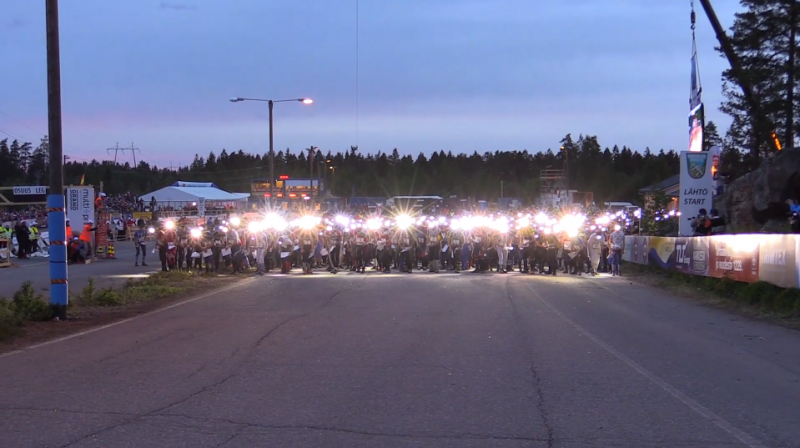
Q: How important is orienteering for KopterKam – financially?
Orienteering is a very small percentage of KopterCam’s work. That said, it is important for me, plus also one of the key sports for the YLE summer sport TV broadcasting. As i said previously though, it is a great testing ground for any new camera systems that we are producing, and all the orienteering organisations are very receptive to trying new things. I could go further and say, that some of the opportunities that KopterCam were given back in the early days, due to the fact that I was an orienteer myself, have greatly lead to the position that we are in now as a market leader in the drone industry.
As for where KopterCam is going now, it is hard to say. But we have certainly put ourself in a great position. These days I would say that 20% of our work, is Live Sport Broadcasting, and the rest is TV, Movies and Advertising. We have gone from filming very small jobs in Finland 4 years ago, to filming feature films all over the world. I think we have been to 12 countries this year so far. This is just the beginning for us;)
Q: Thanks a lot for your answers – and good luck with the future for KopterCam!
 World of O News
World of O News
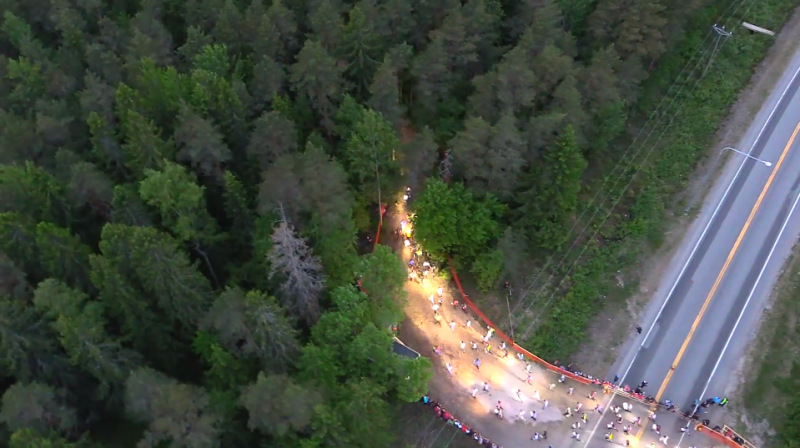
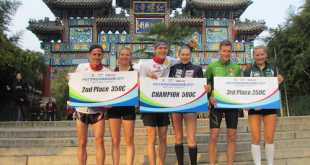
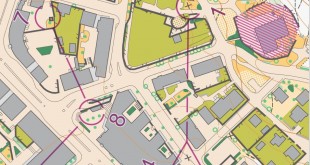
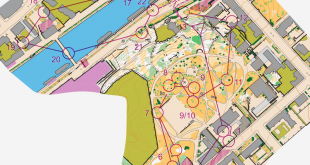
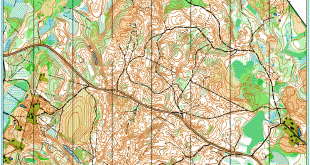
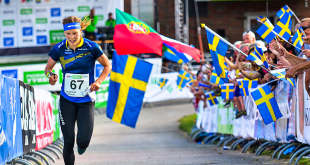
Drones can certainly provide spectacular shots of mass starts. But I am not sure they are particularly useful in the middle of races, e.g., following the leaders, as Brickhill-Jones suggests, unless they are able to fly near the ground level without hitting trees while following the runners, which seems unlikely. If they just fly above the forest, what are we going to see? Some dots moving in the forest? We already see this with GPS, so what’s the point? Also, would a drone hanging over the leaders make it easier to follow them? Instead, what we need is more “up close and personal” shots near the ground level, where we can see what the GPS cannot provide – the runners’ micro route choices, their hesitations, their running technique, etc. So we need more running cameramen, as in the first part of this series, not more drones. And I hope it soon becomes possible to install hundreds, perhaps thousands of small, inconspicuous cameras all over the forest, particularly around route choice decision points and around controls (not just _at_ controls). They don’t need to broadcast all the time – only when the GPS suggests a runner of interest approaches them – so I don’t think the bandwidth would be a problem.
@MChub.
Drones flying at ground level, in a follow me mode without hitting stuff is many many years away. However that wasn’t my point, drones can still be up above the treeline, providing quality footage. There is also a technique called Zoom, which if you have never heard of, may mean that we can actually see more than just dots moving in the forest…..
I still remember back in 2012 in the WOC Mens Relay, 2 controls from the end, there was Lundanes, Holmberg and Prochazka still together. Yes we had the GPS map which was Live, but of course as we know the GPS certainly has a massive delay. Thus while we are all looking at them bunched together at the 2nd last control on the big screen GPS, Prochazka storms out of the forest with a lead. Drones following them from above here would have shown you the true distances the gaps were. You might not like that view, but it certainly would have interested me as a TV viewer.
I agree that more ground cameras are needed, and i spent 7hrs at Jukola running with one also, but there are limitations. I would have happily run entire legs with runners if we could have sorted an HD link back to the OB Van, but at the moment this is just not possible. At the rate technology is going though, maybe its possible in the next few years. Even if it means, using the dreaded drone, as the relay above for the HD signal…
As cameras get smaller, having actual cameras on say the top 20 teams may also be an option, but we still need to wait for the technology to let us actually be able stream it thru thick forest.
I can’t agree with your “thousands of inconspicuous cameras” in the forest though. That would be like watching Discovery Channel and waiting for some rare endangered tiger to come across in front of the sensor so that we can see its rear end for all of 2 seconds…. Plus it would be a tad expensive…
I do agree with more Running Cameraman, and that is something that we are working on. I had actually tried to get some more guys to run with cameras for me this year, but would always run into the issue, that the only guys that i wanted, or felt were quick enough, were still needed by their club teams to race. Giving a 75yr runner a camera cos he wants to help out, isn’t going to give you the shots that you desire. Its a catch 22.
We are trying to improve the TV aspect of the sport, and to be honest, i think its a hell of a lot better than it was a few years ago. Thats only a plus isn’t it??
BJ, you say there was a massive delay in GPS data. What makes you think that the video from drones would be closer to real-time? With video there’s so much more data to be transferred. Read the article about Jukola video coverage and how they had experimented with live videos from a camera mounted on a person following runners. The result was that the quality had to be reduced too low to get it transmitted in real-time.
About the drones following people. I wouldn’t rule it out in a sparse forest. If the right software engineers have interest (or are paid) to get it done, it could be done even today. With the live GPS data from runners, they could even be followed in a denser forest, by flying above the dense parts, especially if the forest density data from O-map is also fed in.
About the zoom. You’d need to carry much heavier lens to get quality zoom. Also, take into account that on longer lens each vibration is much more visible.
@Austris
Well we are getting between zero latency and 60Ms (i.e. one frame). And i can say this for sure, as it was my equipment doing the filming. We are using the same RF links that all the other YLE RF cameras are. The only limitations at the moment are the distance away from the receivers. We can easily get 1000m away with a perfect line of sight. The forest does cause major signal problems though, and is the one reason that Timo Mikkola wasn’t also carrying Live gear. There is a few options that we can fix for this in the future, and that is by having some cranes up above the tree line providing a relay for the signal, or by using drones as the relay point. Using a drone at the moment is tough though given the limited battery time.
As for zoom, on our cinema rigs at the moment, we can easily pull x10 zoom with no affect on vibrations.
There is one company that has some beta testing going on at the moment in regards to spacially aware kopters. It is still very early days though. Is it possible for orienteering in the future, yes of course, but it won’t be for many years until it would actually be finanically viable for our sport. Also in my opinion there are other factors in play. Having flying kopters around runners at head height, is both a distraction to them, and a big safety issue. An above tree top view, plus running cams on the ground is the way to go….
What about an helium baloon with a rope to relay the signal. It seems quite a simple option, but no troubles with batteries and probably cheaper than a drone or a crane.